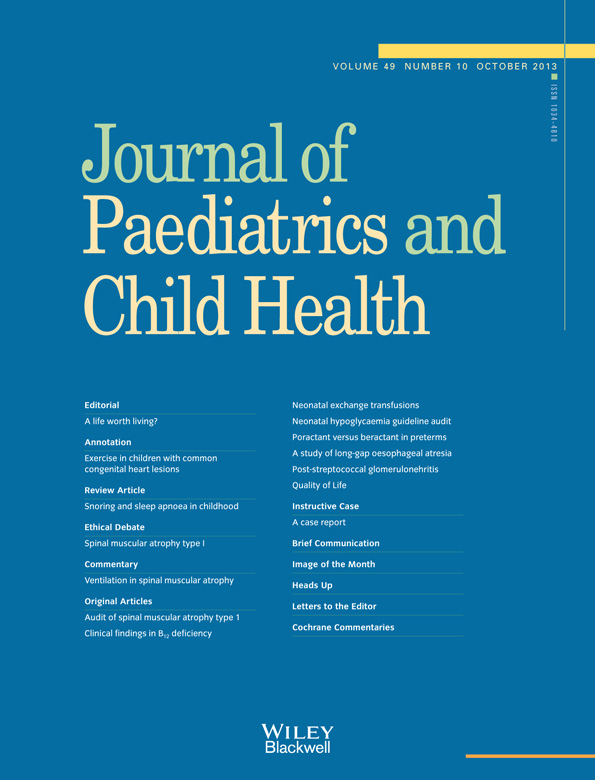Prospective population-based study on the burden of disease from post-streptococcal glomerulonephritis of hospitalised children in New Zealand: Epidemiology, clinical features and complications
Abstract
Aim
A nationwide 24-month study was conducted (2007–2009), via the New Zealand Paediatric Surveillance Unit to define epidemiology and clinical features of acute poststreptococcal glomerulonephritis (APSGN) in children hospitalised with the illness.
Methods
Paediatricians (n = 215) were requested to report new hospitalised cases fulfilling a case definition of definite (haematuria with low C3 and high streptococcal titres or biopsy proven APSGN) or probable (haematuria with low C3 or high streptococcal titres).
Results:
A total of 176 cases were identified (definite: n = 138, probable: n = 38) with 63% residing in the Auckland metropolitan region. Sixty-seven percent were in the most deprived quintile. Annual incidence (0–14 years) was 9.7/100 000 (Pacific 45.5, Maori 15.7, European/other 2.6 and Asian 2.1/100 000). Annual incidence was highest in the South Auckland Metropolitan region (31/100 000), Central Auckland 14.9, West/North Auckland metropolitan region 5.9 and for the remainder of New Zealand 5.5/100 000. Age-specific incidence was highest in age 5–9 years (15.1/100 000). Reduced serum complement C3, gross haematuria, hypertension, impairment of renal function and heavy proteinuria were present in 93%, 87%, 72%, 67% and 44% of patients, respectively. Severe hypertension was closely associated with either symptoms of an acute encephalopathy or congestive heart failure.
Conclusions
New Zealand children carry a significant disease burden of hospitalised APSGN with socio-economically deprived; Pacific and Maori children are being over-represented. Significant short-term complications were observed in hospitalised children with APSGN. Persistently very low rates in European/other suggest a preventable disease.




